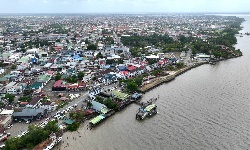InnerMongolia is always associated with grasslands.
Thereare many well-known grasslands in the 1.183 million square kilometer region,such as the Hulunbuir grasslands, Horqin grasslands and Xilin Gol grasslands.
Thevegetation coverage of the region's grasslands averaged 50 percent in the1960s, when the grasslands ecology was at its peak.
However,the herding population increased 5.1 times from the 1960s to 2008, while thelivestock increased by 2.2 times.Due to overstocking, coal mining, migrationand climate change, the vegetation diversity and ecosystems were destroyed,said by Yao Meng, an official from Inner Mongolia's Department of Agricultureand Animal Husbandry. The vegetation coverage fell to only 30 percent around2000.
Hohhot,capital of Inner Mongolia, was frequently hit by sandstorms around 2000. Datashowed that 21 sandstorms hit the city a year at the most. In grazing areas,houses might be buried after sandstorms.
Yaosaid he had driven across the Kubuqi Desert in 2004, and could see barelyvegetation along the road.
Fortunately,several national projects to improve grasslands’ ecology were launched after2000, including the Beijing-Tianjin sandstorm-control project, and subsidy andincentive funds for grasslands protection.
Afterdozens of years, the grasslands’ vegetation coverage hit 43.6 percent onaverage in 2014. For example, the grasslands in Ordos increased by over 12million mu from 2000 to 2010.
In2012, Yao traveled through Kubuqi Desert again. He saw lush salix psammophila andsand sagebrush, instead of bare sand.
Todate, the grasslands cover 1.32 billion mu (88 million hectares) in the region,accounting 22 percent of the total in the country.






